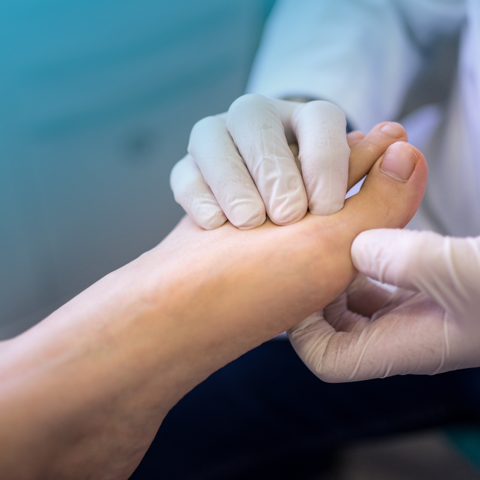
Thermal imaging technology could provide treatment to prevent complications of diabetes-related foot ulcers
Researchers hope technology could improve foot care available to people living with diabetes.
Latest thermal imaging technology for screening and detecting diabetes-related foot ulcers could have the potential to improve patient outcomes.
Following recent studies, researchers believe the breakthrough of their findings could make savings of more than £200 million to the NHS over the next five years.
Studies were commissioned by Thermology Health, a med-tech spin-out from the National Physical Laboratory (NPL).
The NHS currently spends approximately £1.5 billion per year on diabetes-related foot ulcers alone.
Researchers believe the technology could enable the prevention of 25,000 amputations over the next five years.
Diabetes-related foot ulcers, which often lead to amputations, is one of the biggest complications of diabetes.
Many diabetes-related foot ulcers are discovered too late which leads to difficult treatment options and in 10–20% of cases lead to amputations.
A recent study by health technology consultancy Health Tech Enterprise found that if implemented in the UK, the thermal imaging technology could have the potential to deliver savings to the NHS, during a period where cases of diabetes are expected to rise.
Latest estimates predict that over the next seven years the number of people with diabetes worldwide is set to grow by over 100 million, affecting 640 million people by 2030.
Estimates indicate that 15–25% of people with diabetes are at high risk for ulcerations. Foot ulcers are one of the main complications of diabetes, recognised as one of the top three chronic health conditions worldwide.
Yuval Yashiv, CEO at Thermology Health, said: “It has been proven that there is the potential for more than 60% reduction in ulcerations by using temperature as an early-warning indicator. Thermology Health’s technology relies on ultra-accurate temperature readings and AI (artificial intelligence) analytics and will allow patients to scan their feet at home, with a report automatically sent to their clinician. This frequent remote monitoring will prevent ulceration and amputations. Currently accurate monitoring at home is needed by 1 million high-risk patients in the UK and 100 million worldwide.
“We always knew that this technology has the potential to make a very material impact, both financially and for improved patient outcome. However, these studies quantify this impact and it’s astonishing to see the magnitude of the impact that it can have on the NHS and abroad.”
Read the DRWF diabetes information leaflet Foot health and diabetes
I would like to make a regular donation of
I would like to make a single donation of
There are lots of ways to raise money to support
people living with all forms of diabetes.
Bake, Swim, Cycle, Fly ... Do It For DRWF!
Fundraise with us
Recent News


